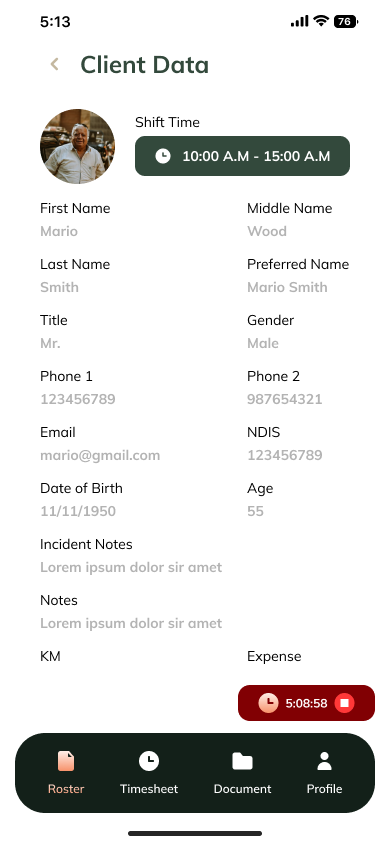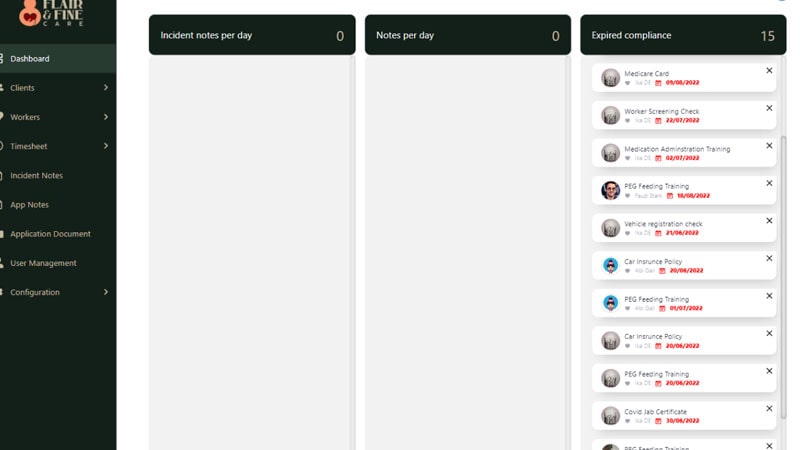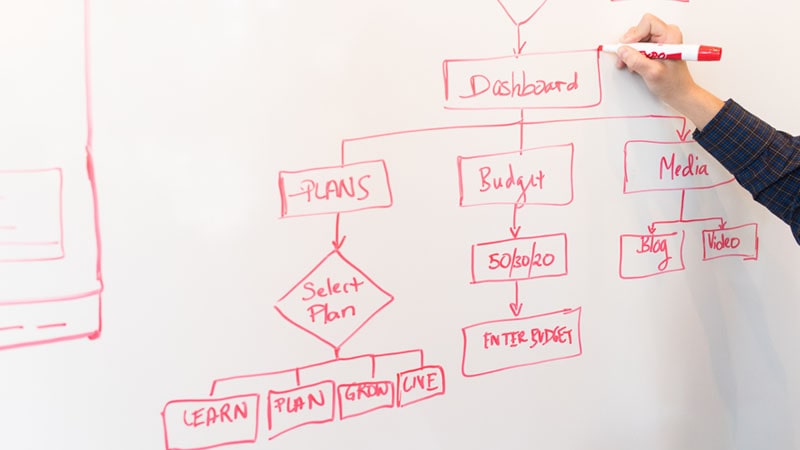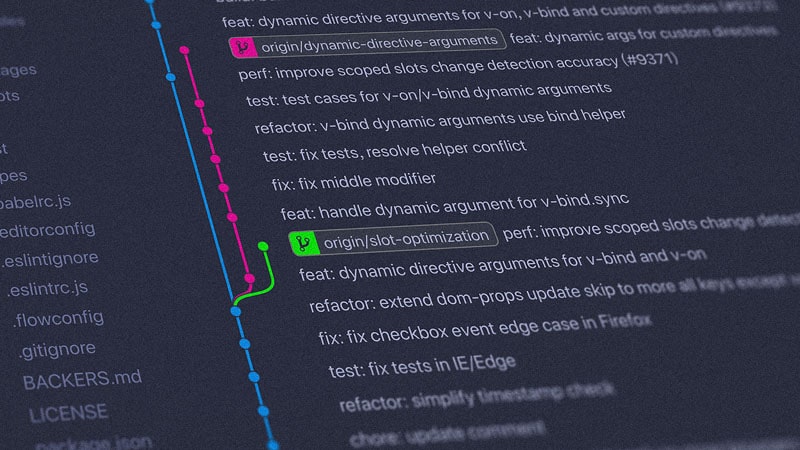About Flair and Fine
Flair and Fine is an NDIS-registered disability support organisation that provides healthcare workers with disability in Australia. Their custom healthcare support is aimed at helping disabled people live independently through their condition by giving daily life and household tasks assistance, transport services, and disability skill development plans.
The Story Draws from a Stress due to a Complicated App

They used a company’s off-shelf software to help their operational activities, such as managing workers’ shifts, schedules, job outcomes and payroll. The application consisted of many features they did not use, and it needed to be more efficient for both the workers and the admin.
Ineffective Tools
Flair and Fine were frustrated by the complexity of their present technology, which hampered their ability to manage their workers’ tasks and paychecks. The tool included several needless functions that were not used by the workers, resulting in confusion and wasted time. The administrator required assistance handling the app, and the workers struggled to use it efficiently. It not only caused user confusion, but it also generated errors and delays in the workflow that impacted their pay.
Cost Wastage
Furthermore, the expense of the tool was becoming a burden on the healthcare provider for disability because they were paying for unnecessary features. The confusion caused by the app also resulted in errors in the job report process to the higher level.
All these challenges were hindering the operations of Flair and Fine, and we knew they needed a more tailored and user-friendly solution to meet their needs.
What We Did to Flair and Fine

Upscalix started the initiative by performing extensive research into the healthcare industry, focusing primarily on the requirements of people with impairments. We collaborated closely with the organisation’s stakeholders to thoroughly understand their operations and identify pain spots that needed to be addressed by doing these:
Goals
According to the information provided by the client, we developed a project scope that included goals and action items. The goals were to boost the customer’s productivity, reduce costs, and assist the client in presenting relevant data to upper management (NDIS).
Strategy
User-centred Design
Upscalix prioritised the end-user experience throughout the development process, ensuring that the solution was simple and highly useful for healthcare providers with varying degrees of technical skill.
Agile Development
The project was executed using agile development methodologies, which enabled the team to shorten the development cycle and reduce wasted time and materials.
Agile was an approach to project management focused on delivering value to the customer in small increments rather than trying to complete the entire project simultaneously. Instead of working on a project from start to finish, agile broke the project down into smaller chunks called sprints. Each sprint was typically two weeks long and focused on delivering specific features or functionality.
The goal of agile was to be adaptable to change and to improve the product as it is being developed continuously. This method allows Upscalix to remain flexible and adapt to comments during development. It emphasised communication and feedback to ensure that the final result accurately reflects the client’s needs.
Collaboration
Upscalix collaborated extensively with clients throughout the development process, soliciting input and adopting their ideas to guarantee the final product matched their expectations.
Solution
Upscalix worked closely with Flair and Fine to develop a custom software solution that addressed their unique needs.
The Software

To overcome the problem faced by Flair and Fine, Upscalix created custom software that consisted of two items: An admin panel and a mobile app.
Upscalix implemented a mobile app and admin panel to help manage worker information, schedules, tasks, payroll, and view patient information. The mobile app allowed workers to see details of assigned jobs, record assignment details (work hours and notes), and view the patient’s detailed information and history. Upscalix built the mobile app for two operating systems: Android and iOS, to accommodate all workers’ devices.
While the admin panel provided a centralised platform for the admin (client’s company) to view workers’ profiles, manage workers’ jobs (shifts, scheduled appointments, patient data), track workers’ output (work hours, notes, documents attached, pay rate, and worker’s map).

The admin panel and the mobile app would be integrated into XERO, an accounting software. The admin panel would process the data submitted from the workers’ app and send it to XERO. Then, XERO would use it to process the payroll.
Collaboration with Client
The client was actively involved in the project, providing input and making required changes to ensure that the final product exceeded their expectations. We updated them on the progress of each sprint via frequent progress updates to our client, and they were invited to demo sessions where Upscalix presented the completed work.
After the demo session, Upscalix would transmit the relevant credentials and project deliverables (the admin panel, mobile app, documentation, and other necessary details) to the client so that they could do a self-test. It reflected our unique approach named “Intelligence Experience”. Upscalix worked closely with clients to guide and set the pace of each project. We ensured clients made well-informed choices and got the best results possible. The client was in charge of the job, but the company helped them by giving them information and advice.
Result that Speaks Volume
Before Upscalix created the admin panel and mobile app for Flair and Fine, the client’s employees needed to go through various menus to enter data, which required time and effort. However, following the implementation of the new software, the client saw a considerable improvement in their workflow. They could save up to 30% of their time, resulting in enhanced production and cost savings.
Conclusion
Upscalix worked collaboratively with Flair and Fine to create a custom software solution tailored to their unique needs. Through user-centred design and agile development methodologies, Upscalix created a mobile app and admin panel that improved worker productivity, reduced costs, and provided relevant data to upper management.
The final result was a success as the custom software helped Flair and Fine efficiently manage worker information, schedules, tasks, and report of payroll. It also allowed workers to view patient information and record assignment details while on the go. With the integration of XERO, an accounting software, the admin panel processed the data submitted from the workers’ app and sent it to XERO, making payroll processing a breeze.
We at Upscalix are proud to have been a part of this project and helped Flair and Fine provide better care for people with disabilities. Seeing our clients succeed drives us, and we look forward to creating more tailored solutions for businesses in the future.
If you’re facing a similar problem or likely like our client had, we’ll be happy to get you out of that problem right now. Drop us a call, and we’ll reach you back ASAP!







